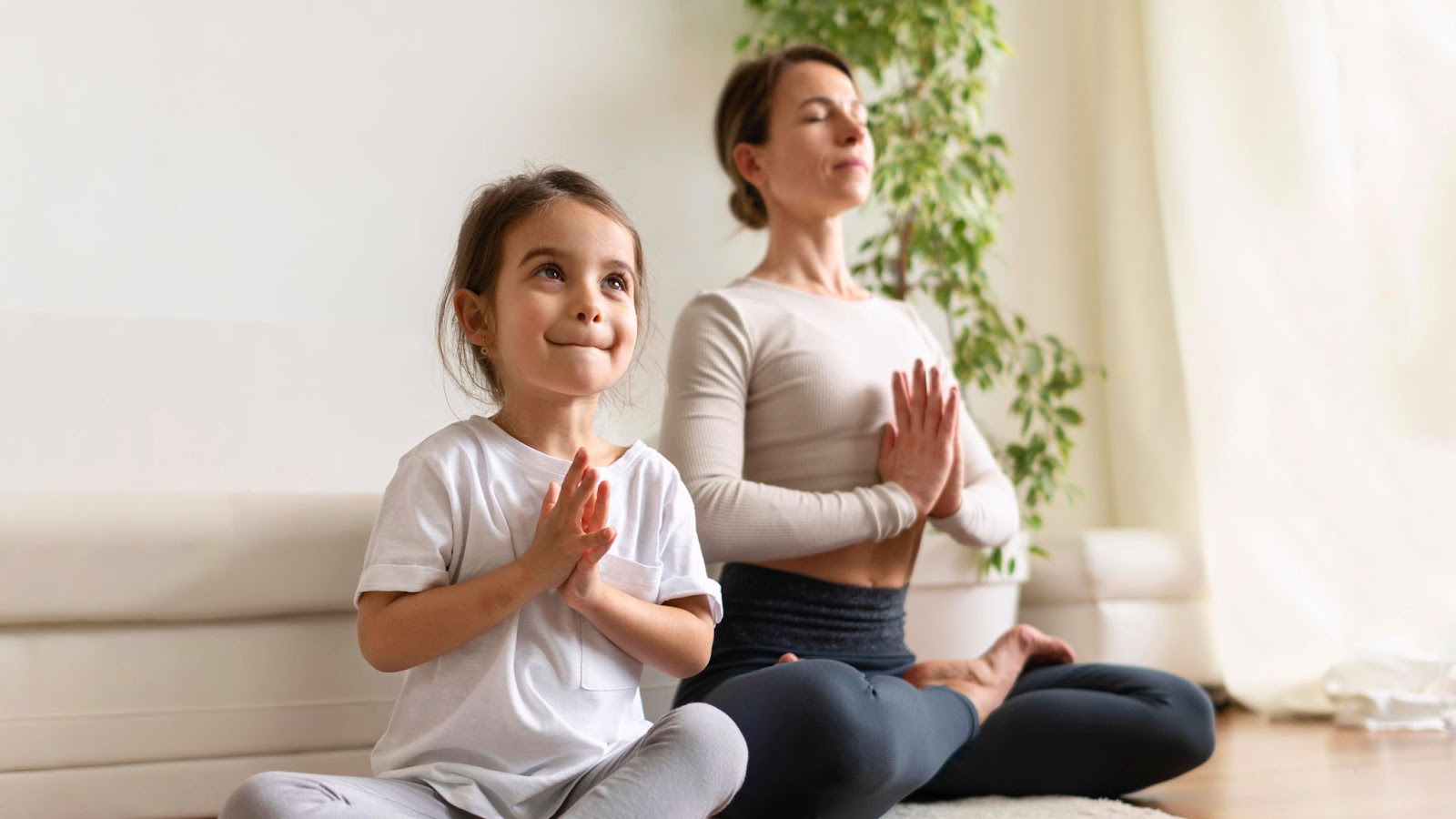In today’s fast-paced world, where distractions abound and stressors creep into every aspect of daily life, it is essential to equip our children with tools that will help them navigate their emotional landscapes. Meditation for Kids has emerged as a powerful technique that fosters mindfulness, promotes relaxation, and cultivates emotional resilience. This practice allows children to connect with themselves on a deeper level, helping them cultivate inner peace amidst the chaos of modern living.
Meditation for Kids

Engaging in meditation is not just an adult practice; it can play a transformative role in the lives of young minds. Children often experience emotional turbulence, whether from school pressures, social dynamics, or family issues. Introducing meditation into their routine can provide them with a safe space to explore their feelings and thoughts.
The concept of meditation for kids involves simplifying traditional techniques so they resonate with younger audiences. Unlike conventional meditative practices that may require prolonged focus or silence, child-friendly versions are tailored to accommodate shorter attention spans and active imaginations. This adaptability makes meditation accessible and engaging for children, leading to lasting benefits.
Understanding the Importance of Meditation for Children
Meditation provides a unique opportunity for children to learn about themselves. It encourages self-reflection—an essential skill that helps them understand their emotions and reactions to situations. When children meditate, they become more aware of their thoughts, allowing them to observe rather than react impulsively.
This awareness can lead to better management of stress and anxiety. As children learn to recognize their feelings, they also develop coping mechanisms that help them deal with overwhelming emotions. For instance, when faced with challenges such as peer pressure or academic expectations, a child who regularly meditates can revert to that calming state, processing their emotions more effectively.
Moreover, the practice of meditation strengthens concentration skills. In a world filled with distractions, students often struggle to maintain focus on their studies. Regular meditation sharpens their ability to concentrate, boosting both academic performance and overall cognitive abilities. Thus, meditation becomes not only a means of relaxation but a tool for enhanced learning.
Emotional Regulation through Mindfulness
Emotion regulation refers to the ability to manage and respond to one’s emotional experiences. Children frequently encounter emotional highs and lows, sometimes struggling to articulate what they feel. Through meditation for kids, children can learn to identify their emotions without judgment. This non-judgmental observation fosters acceptance and understanding, allowing them to navigate their feelings with greater ease.
Mindfulness exercises, a key component of meditation, teach children to stay present in the moment. By concentrating on their breath or the sensations of their bodies, kids can ground themselves during moments of distress. This presence counters feelings of overwhelm—a common experience for many children today. For example, if a child feels anxious before a test, practicing mindfulness techniques can create a sense of calmness, allowing them to perform to the best of their ability.
Cultivating Empathy and Compassion
A lesser-known benefit of meditation for kids is its ability to foster empathy and compassion. Many meditation practices incorporate visualizations or loving-kindness meditations, which encourage children to send goodwill to themselves and others. This practice nurtures a sense of connection and understanding towards peers, enhancing their social interactions.
As children grow in their capacity for empathy, they become more attuned to the emotions of those around them. This improved interpersonal sensitivity reduces instances of bullying and fosters cooperation within classroom settings. Ultimately, cultivating compassion in young minds leads to a more harmonious environment, both at home and in schools.
Simple Meditation Practices to Help Kids Relax
When considering how to introduce meditation into a child’s routine, simplicity is key. Simple meditation practices to help kids relax can be easily integrated into daily schedules, providing immediate and long-lasting benefits. These practices are less about adhering to strict guidelines and more about creating a joyful and enriching experience for children.
Breathing Techniques: The Foundation of Relaxation
One of the most approachable ways to introduce meditation is through breath awareness. Teaching children how to focus on their breath offers them a fundamental tool for relaxation.
To begin, encourage kids to find a comfortable position, either sitting cross-legged or lying down. Invite them to close their eyes softly and take a few deep breaths. Explain that with each inhale, they should imagine filling their bellies like balloons, and with each exhale, visualize the air slowly escaping the balloon.
This visualization encourages children to connect with their breath, promoting relaxation. As they breathe in deeply, they may feel their worries lift away. Gradually, as they become more familiar with this practice, they can extend the duration of their breathing sessions. Over time, this simple act of focusing on their breath can transform into a reliable method for calming their minds during stressful moments, whether at school or home.
Guided Imagery: Encouraging Creativity and Calmness
Guided imagery is another effective practice that appeals to children’s vivid imaginations. By leading them through a narrative, you can transport them to peaceful locations where they can engage all five senses.
Start by finding a tranquil environment free of distractions. Ask the children to close their eyes and envision a serene landscape—a beach, a forest, or even a cloud floating in the sky. Encourage them to visualize the sights, sounds, and smells of this place.
You might say, “Imagine your feet sinking into warm, golden sand as gentle waves lap against the shore. Can you hear the seagulls calling and feel the warm sunshine on your face?”
This practice not only serves to calm their minds but also sparks their creativity. Children often derive joy from crafting their imagined worlds and exploring various scenarios. Through guided imagery, they learn how to control their mental spaces, which can be particularly helpful during anxious moments.
Mindful Nature Walks: Connecting with the Environment
Nature has a remarkable ability to instill tranquility and reflection. Mindful nature walks offer children the chance to immerse themselves fully in the world around them while developing a sense of gratitude and appreciation for their environment.
During these walks, encourage children to engage their senses. Ask them to pay attention to the colors, sounds, and textures they encounter. They can observe the rustling leaves, the chirping birds, or the feeling of grass beneath their feet.
You can prompt them with questions like, “What do you see? What do you feel? Does anything smell sweet or fresh?” This heightened awareness creates a mindful experience, allowing them to enjoy the moment and release any tension or stress they may have carried with them.
Body Scan: Tuning Into Physical Sensations
Another beneficial practice involves a body scan, which encourages children to tune into the physical sensations within their bodies. This approach enables them to develop a deeper awareness of how stress manifests physically, fostering relaxation.
Begin by guiding children to lie comfortably on their backs. Instruct them to take several deep breaths before focusing their attention on different body parts, starting from their toes and moving up to their heads. Encourage them to notice any areas of tension or discomfort without judgment.
As they progress through each part of their bodies—from their toes to their ankles, knees, thighs, and beyond—ask them to consciously relax any tight muscles. This practice not only promotes relaxation but also teaches children how to listen to their bodies and recognize when they need rest or a break.
Conclusion
Incorporating meditation for kids into daily routines can yield significant emotional, mental, and social benefits. As young minds grapple with the complexities of their environments, these simple yet profound practices empower them to cultivate mindfulness, emotional resilience, and a sense of connection with themselves and others.
By prioritizing practices such as breathing techniques, guided imagery, mindful nature walks, and body scans, parents and educators can instill valuable skills that will serve children throughout their lives. As the practice of meditation takes root, children will find themselves better equipped to face life’s challenges with grace and confidence, embodying the principle of “breathe and relax” in every aspect of their journey.
Kids’ Immunity: Essential Tips for Boosting Your Child’s Health Naturally

